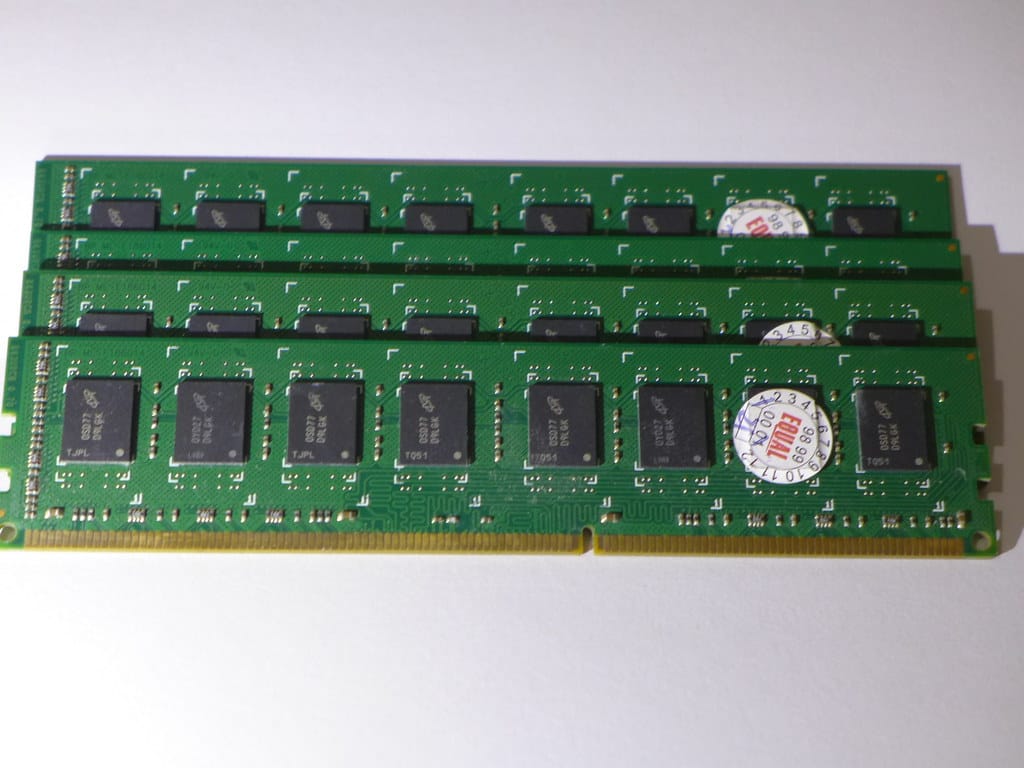DRAM Prices Surge 20% as China's Chip Independence Push Reshapes Global Memory Market
Rising demand from Chinese manufacturers seeking alternatives to foreign suppliers is driving memory chip prices to their highest levels in over a year, signaling a fundamental shift in the global semiconductor landscape.
The global DRAM market is experiencing its most significant price surge since 2022, with memory chip costs jumping nearly 20% in the fourth quarter of 2024. At the heart of this dramatic shift lies China's aggressive push toward semiconductor self-reliance, creating ripple effects that are reshaping supply chains and forcing manufacturers worldwide to recalibrate their strategies.
China's Strategic Pivot Drives Demand
China's determination to reduce dependence on foreign semiconductor technology has created unprecedented demand for domestically produced memory chips. The country's "Made in China 2025" initiative, coupled with ongoing geopolitical tensions and export restrictions, has prompted Chinese manufacturers to prioritize local suppliers over established players like Samsung, SK Hynix, and Micron.
This strategic shift has created a supply-demand imbalance that industry analysts describe as the most significant market disruption since the pandemic-era chip shortage. Chinese memory manufacturers, including Yangtze Memory Technologies (YMTC) and ChangXin Memory Technologies (CXMT), are struggling to meet surging domestic demand while simultaneously investing billions in capacity expansion.
Market Dynamics Shift Dramatically
The price surge represents more than a temporary market fluctuation—it signals a fundamental restructuring of the global memory market. Industry data shows that Chinese companies have increased their DRAM procurement from domestic suppliers by over 150% compared to the same period last year, while reducing imports from traditional suppliers by approximately 30%.
"We're witnessing the birth of a parallel memory ecosystem," explains Dr. Sarah Chen, semiconductor analyst at TechInsights Research. "Chinese manufacturers are willing to pay premium prices for domestically produced chips, even when equivalent foreign alternatives are available at lower costs."
This willingness to prioritize supply security over cost optimization has created a two-tier pricing structure, with domestic Chinese DRAM commanding significantly higher prices than comparable international products.
Global Supply Chain Implications
The ramifications extend far beyond China's borders. Traditional memory manufacturers are grappling with reduced access to one of the world's largest semiconductor markets, forcing them to compete more aggressively for remaining customers. This intensified competition has led to strategic partnerships and pricing adjustments across the industry.
Samsung and SK Hynix, which historically dominated the Chinese market, are now focusing resources on serving customers in North America, Europe, and other Asian markets. Meanwhile, they're accelerating investments in advanced manufacturing technologies to maintain competitive advantages in high-performance memory segments.
The shift has also impacted global electronics manufacturers who rely on Chinese suppliers. Companies producing smartphones, laptops, and other consumer electronics are facing higher component costs, with some analysts predicting these increases will eventually translate to higher consumer prices.
Technology Race Intensifies
China's push for chip independence has accelerated domestic innovation in memory technology. Chinese manufacturers are investing heavily in next-generation DRAM technologies, including DDR5 and emerging memory architectures. Government backing through subsidies and favorable policies has enabled rapid capacity expansion and technological advancement.
However, challenges remain significant. Chinese memory manufacturers still lag behind global leaders in manufacturing efficiency and yield rates. Industry experts estimate it will take 3-5 years for domestic Chinese production to fully meet the country's memory chip requirements without compromising performance or reliability standards.
Looking Ahead: A Divided Market
The current price surge appears sustainable in the near term, driven by China's unwavering commitment to semiconductor self-reliance and limited domestic production capacity. Market forecasts suggest DRAM prices will remain elevated through at least the first half of 2025, with potential for further increases if geopolitical tensions escalate.
For global technology companies, this transformation demands strategic adaptation. Diversifying supplier networks, investing in alternative technologies, and developing flexible supply chain strategies have become essential for maintaining competitive positioning in an increasingly fragmented market.
The DRAM price surge represents more than a market adjustment—it's a preview of how geopolitical forces are reshaping global technology markets. As China continues its march toward chip independence, the semiconductor industry must navigate an era where strategic considerations increasingly outweigh pure economic efficiency, fundamentally altering the rules of global competition.
